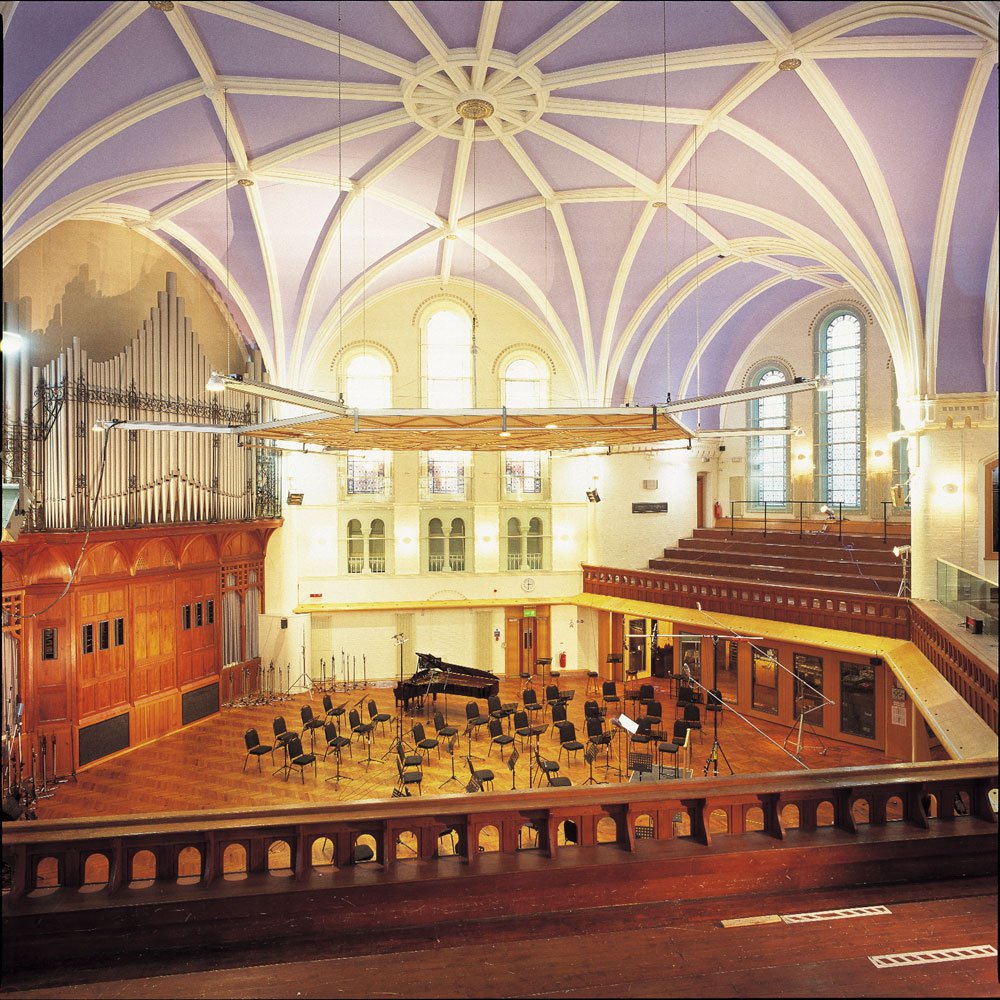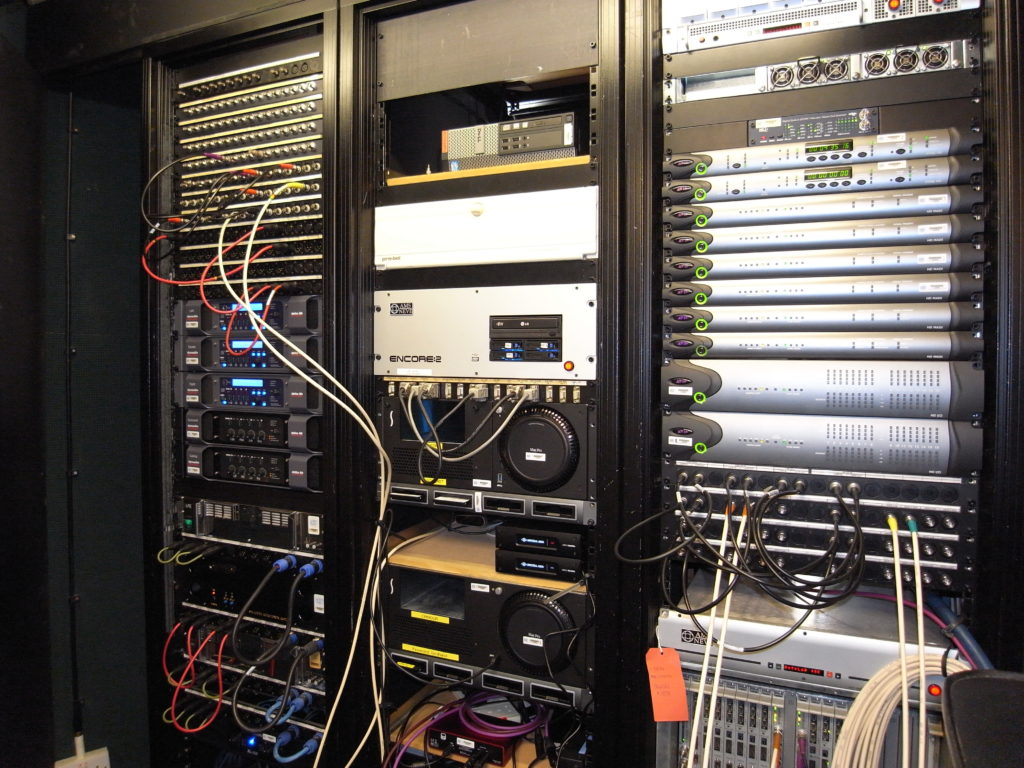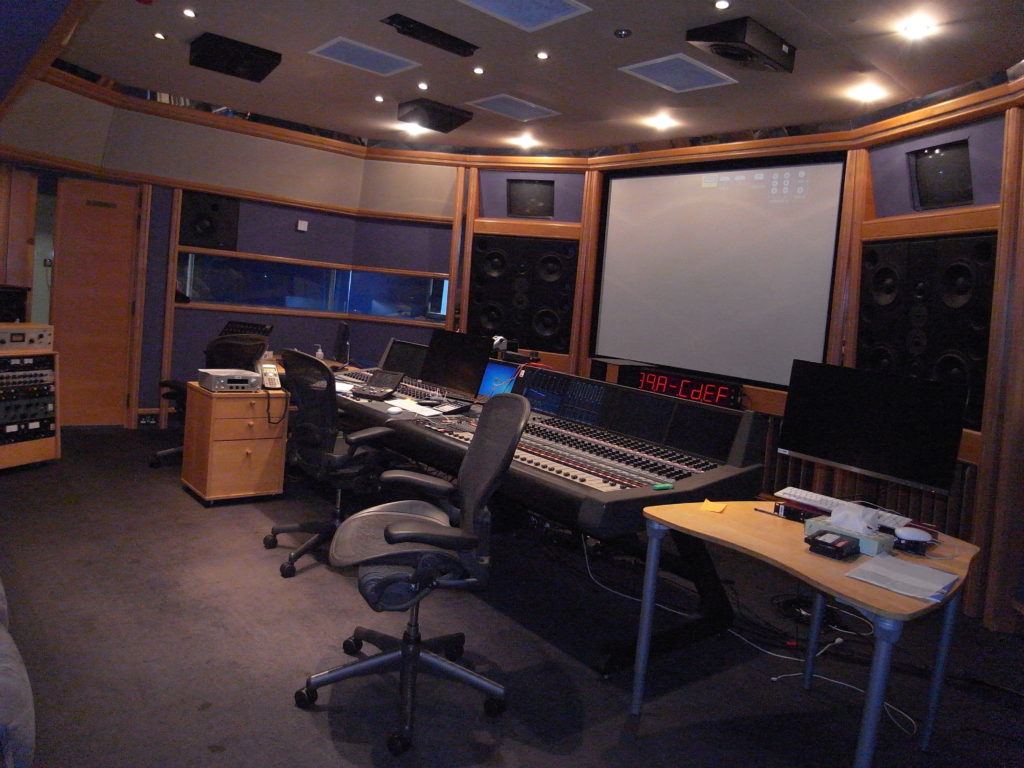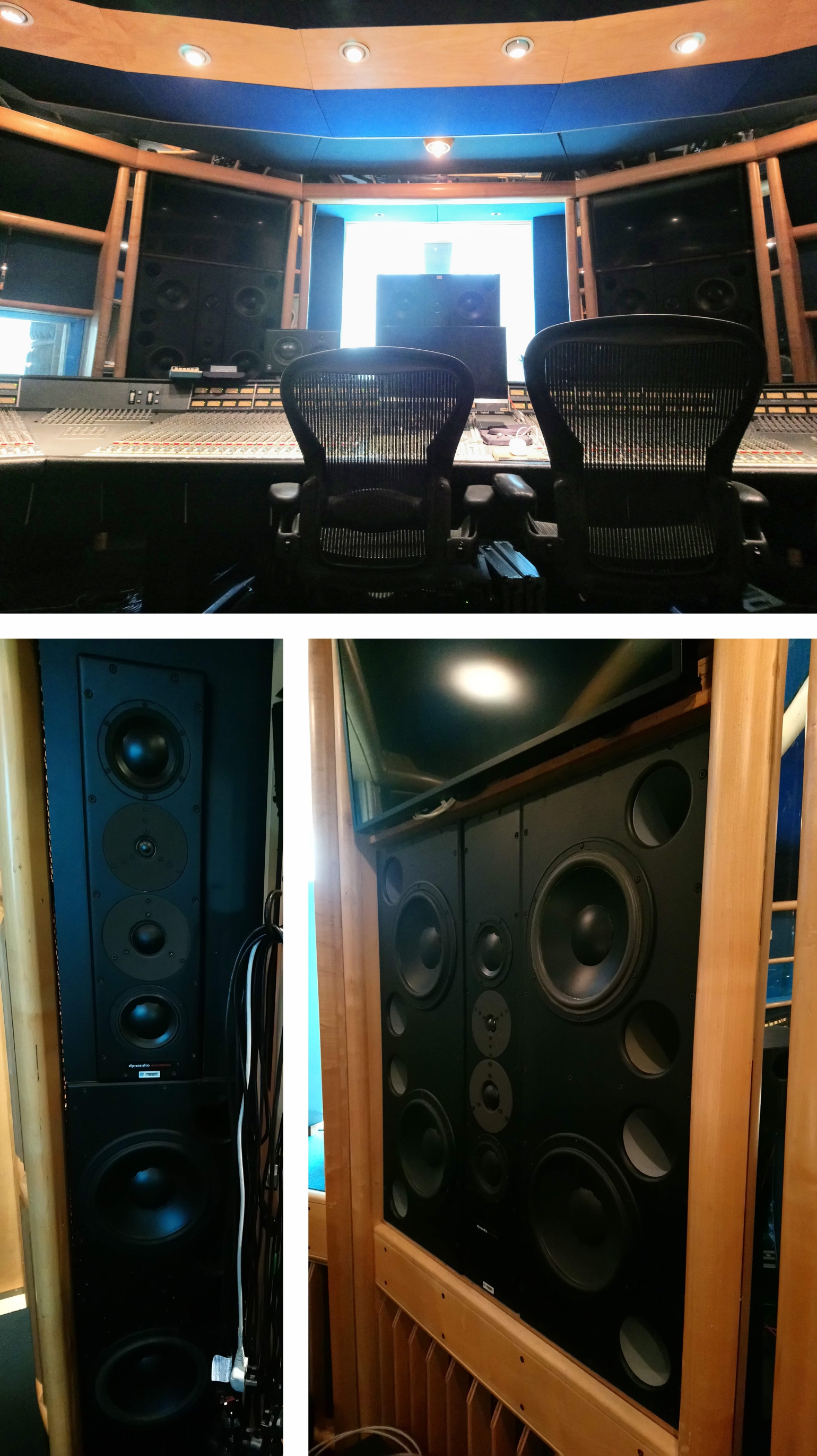
From the coolest to the cringiest the AIR studio complex, in London’s leafy Hampstead, has seen it all and probably recorded and mixed it all.
Want a roll-call of the recent clients through the doors?
Let’s start with film scores and post production – Isle of Dogs, Loving Vincent, Moulin Rouge, Wonder Woman, Justice League, Mamma Mia (Here we go again!) – the list goes on and on through Lord of the Rings, Harry Potter, James Bond, Disney, Twilight…
Having the amazing space of Lyndhurst Hall means a 100 piece orchestra can play together, all the while benefiting from the superbly controlled acoustics that have evolved from the building’s original purpose – a church and missionary school, built in the 1880s.

Air Studios, as they are today, in Hampstead. Where they are every day.
None of these can be name-checked without, of course, mentioning the legend of Sir George Martin, founder of the studios in 1969 and producer of the Beatles.
Hampstead has been AIR’s home since 1991, previously being situated in the very heart of London at Oxford Circus – the junction of two of the capital’s most famous shopping streets – Oxford Street and Regent Street. The move was primarily instigated due to the lease expiring (it’s now the Top Shop/Top Man flagship clothes store!), but heralded a new era of film work and television post-production as well as continued business with emerging and established artists from Dua Lipa, Mark Ronson, and the Black Eyed Peas, through to Joni Mitchell, Paul McCartney, Pink Floyd, back in the days of Oxford Circus.

The original location in the heart of London’s famous Oxford Circus. Thanks Google Street View.
This name-checking works both ways too – still very much one of the studios to have worked in, together with Abbey Road, it maintains its level of quality through not only its tireless friendly staff and technical expertise, but also the facilities on offer, which is where Delta becomes part of this pursuit of excellence.

Plan view of Lyndhurst Hall showing control room as well as main performance area…
The major monitoring systems at AIR are all Dynaudio bespoke installations, encompassing four main rooms – the control room attached to Lyndhurst Hall itself, plus three studio suites. Studio 1 – the largest of the three suites – can accommodate up to 45 musicians and is widely used for smaller orchestral recordings and bands. Studio 2 is a self-contained suite on the first floor of the building, and is fully kitted out to cater for mixing and post-production TV work with a 5.1 monitoring system. Studio 3, on the top floor, is fully optimised for film scoring and other high-end surround mixing projects.

Appreciate the size! Lyndhurst in its full glory!
All these systems were installed and tuned by Munro Acoustics and Phil Pyatt, director of the company, explains the reason for the upgrade and the path it took along the way.
“Changing the monitoring in a studio complex as prestigious as AIR requires months, if not years, of planning. Not only does any replacement have to equal or better the system it replaces, it also has to tick one other vital box – consistency. Moving from one suite to another has to be entirely possible with minimal differences in monitoring quality. That’s not to say differing monitoring isn’t available and in use – listening to a mix in other environments is essential – but ensuring the monitoring doesn’t add anything to the mix requires the most transparent amplification coupled to a speaker system that does not introduce colouration.”
Munro Acoustics have a long history working with MC2 and XTA, having chosen their amplification and processing for monitoring systems for many years, in studios and production suites throughout the UK, including Abbey Road, Shepperton and Pinewood film studios, as well as sites for the BBC.
Phil continues…
“There was a concern that the speaker systems in AIR were somehow past their very best and it was time for an update. Knowing the history of the speakers and their longevity, it was decided to start with looking for new amplification and processing first, as this was going to be part of the equation regardless, and easier to swap out and audition than replacement of bespoke fitted cabinets.”

L-R Phil Pyatt and Simon Knee in Studio 2’s control room.
It was actually Simon Knee, Head of Technical and Engineering at AIR, who first took an interest in Delta amplifiers, having auditioned some other MC2 amplifiers (S Series) and discovered the integrated DSP of the Delta Series, along with the Ethernet remote functionality.
Previous amplifier installations with Munro Acoustics and MC2 would normally involve rebadging of the amplifiers with a Dynaudio acoustics livery, but ahead of this possibility, AIR took delivery of just three standard Delta DSP amplifiers on trial.
And then didn’t want to give them back.
Simon was delighted with the initial results:
“The amps were a dream to set up and configure – including the DSP aspects. All concerns about the viability of our beloved Dynaudio monitors quickly evaporated!”
Phil did some preliminary tuning for the first studio (#1 – the biggest apart from Lyndhurst hall), accompanied by Mark Bailey from MC2, who was on hand to offer technical support and advice on getting to grips with the amplifiers’ on-board extensive signal processing.

All amped up in Studio 2’s machine room…
Mark explained how the integration of the DSP together with the fact that these are four channel amplifiers in 2U, offered advantages in many areas for the studio:
“As each amplifier is four channel, this obviously cuts down on rack space in the machine room, and the ace in the pack comes from the fact that the DSP actually has eight outputs, the other four of which are available as independent XLR outputs on the rear panel, meaning additional processed channels can be used with non-DSP versions of the amps (or other amps if necessary). This further reduces costs and simplifies system configuration with a single DSP+non-DSP amp being able to realise a stereo 4-way fully processed system.”
Simon was keen to update the functionality of the monitoring systems’ capabilities and take advantage of the Ethernet remote control to monitor (sic) all control rooms’ systems from a centralised location, and to be able to recall different voicing for the monitoring according to the preferences of visiting high-profile engineers.
“The Dynaudio monitors are so transparent they can easily take a little personal tuning according to who is using them without introducing listening fatigue. Their incredible performance goes hand in hand with the enormous headroom we now have in the system thanks to the new Delta amplification. I’ve had only positive comments about the changes – the overall feeling is that the system is ‘fun’ again – no mean feat for a top-end studio monitor system!”
In fact, Simon had such positive feedback from staff and engineers alike that the decision was made to add non-DSP Deltas into the mix, as it were, and upgrade all three studios, including the mammoth system in studio 3 – a full 11.1 surround system used for film score work as well as TV post production.

Studio 3’s machine room…

…and the very impressive Studio 3 control room, complete with 7.1.4 surround.
Following the front panels swaps (!) on the loan units that were never to return, the entire amplifier line-up across all four control rooms was:
Lyndhurst Hall
3 x Dynaudio Acoustics D80DSP (Delta 80 DSP) + 1 x Dynaudio Acoustics D40 (Delta 40 non-DSP) powering a Dynaudio 5.1 system:
Custom M4 for LCR and M2 for surrounds, plus custom 2 x 18” sub.
Studio 1
3 x Dynaudio Acoustics D80DSP + 3 x Dynaudio Acoustics D40 powering a Dynaudio 7.1 system:
Custom M4 for LCR, BM15 for surrounds, plus custom 2 x 18” sub.
Studio 2
3 x Dynaudio Acoustics D80DSP + 3 x Dynaudio Acoustics D40 powering a Dynaudio 5.1 system:
M4 for LCR and custom M4 for surrounds, plus custom 2 x 18” sub.
Studio 3
3 x Dynaudio Acoustics D80DSP + 2 x Dynaudio Acoustics D40 powering a Dynaudio 11.1 system.
M4 for LCR, MF15SR for surrounds, MF15C for ceilings, plus custom 2 x 18” sub.

Monitors montage from Studio 2 showing LCR, custom surrounds and mains.
Last words go to Mark:
“Dealing with Munro Acoustics and Phil is always a pleasure. The staff at Air have been so good to work with, Simon in particular, and the final outcome for the studios has been fantastic. It’s great to see (and hear) our latest amplifiers getting recognition in such prestigious and aurally demanding surroundings!”
Download a pdf version to read off-line here.

